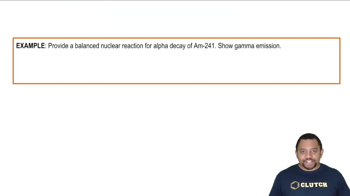Gamma Emission definitions Flashcards
 Back
BackGamma Emission definitions
1/15
Terms in this set (15)
- Gamma EmissionA process where an excited atom emits a gamma ray, a high-energy photon, without changing its mass or atomic number.
- Gamma RayA high-energy photon with no mass or charge, part of the electromagnetic spectrum, emitted during gamma emission.
- PhotonA particle of light representing a quantum of electromagnetic energy, with no mass or charge.
- Electromagnetic SpectrumThe range of all types of electromagnetic radiation, including gamma rays, characterized by varying wavelengths and frequencies.
- Thallium-204An isotope of thallium that can undergo gamma emission, remaining unchanged in mass and atomic number.
- Excited StateA condition where an atom's electrons occupy higher energy levels than the ground state, often preceding gamma emission.
- OrbitalA region around an atom's nucleus where electrons are likely to be found, changing during gamma emission.
- Ionizing PowerThe ability of radiation to ionize atoms, with gamma rays having low ionizing power compared to other particles.
- Penetrating PowerThe ability of radiation to pass through materials, with gamma rays having high penetrating power.
- Alpha DecayA type of radioactive decay where an atom emits an alpha particle, often occurring alongside gamma emission.
- Beta DecayA radioactive decay process where a beta particle is emitted, frequently accompanying gamma emission.
- Lead ShieldingA protective barrier made of lead, used to block the penetrating power of gamma rays.
- Concrete ShieldingA dense material used to protect against the high penetrating power of gamma rays.
- Mass NumberThe total number of protons and neutrons in an atom's nucleus, unchanged during gamma emission.
- Atomic NumberThe number of protons in an atom's nucleus, remaining constant during gamma emission.



